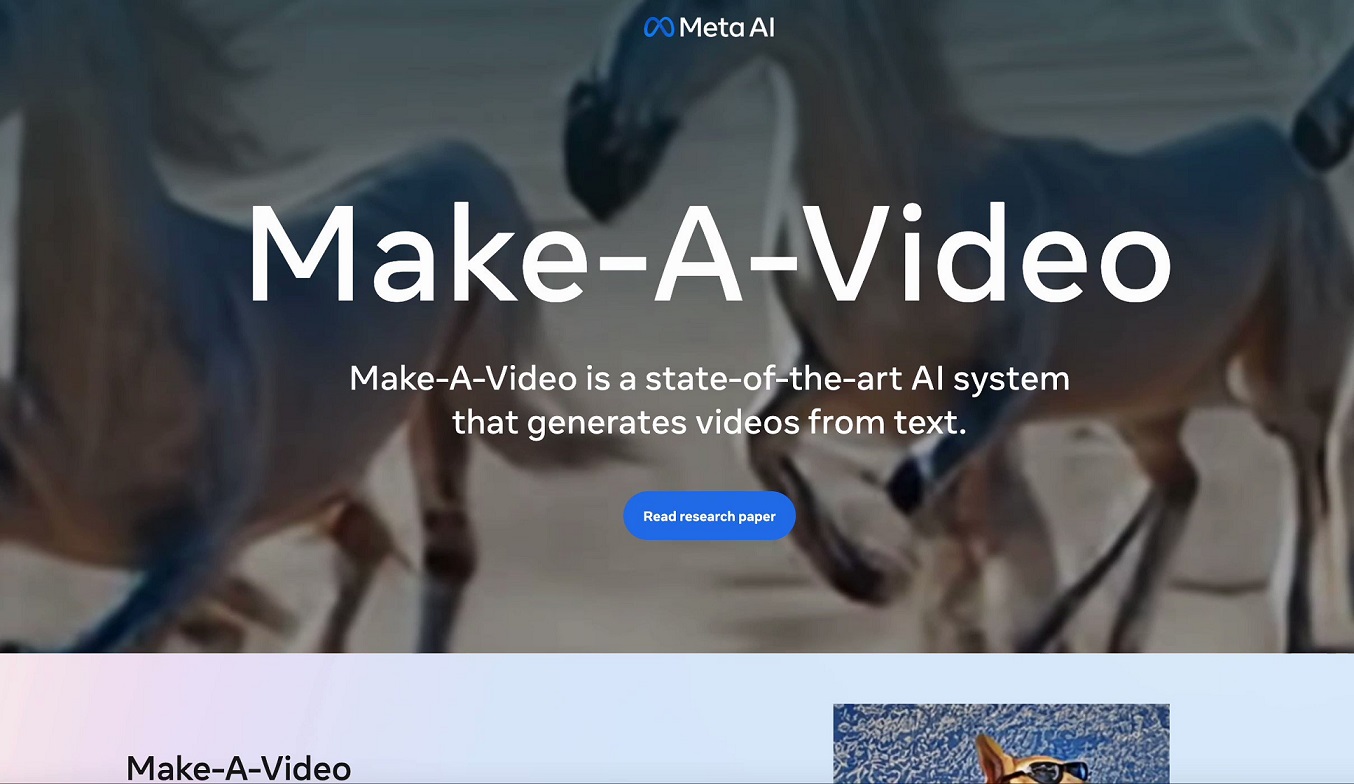Utilizing a text portrayal or a continuous picture, Make-A-Video can convey video on request.
Today, Meta detailed Make-A-Video, a man-made insight filled video generator that can make novel video content from text or picture prompts, such as existing picture association gadgets like DALL-E and Stable Scattering. It can moreover make assortments of existing accounts, but it’s not yet open for public use.
On Make-A-Video’s statement page, Meta shows model accounts made from text, including “an energetic couple walking around profound deluge” and “a teddy bear spreading out an image.” It similarly includes Make-A-Video’s ability to take a static source picture and vivify it. For example, a still photo of a sea turtle, when dealt with through the man-made insight model, can have every one of the reserves of being swimming.
The indispensable development behind Make-A-Video — and why it has shown up sooner than specific experts expected — is that it works off existing work with text-to-picture association used with picture generators like OpenAI’s DALL-E. In July, Meta proclaimed its own text-to-picture man-made knowledge model called Create A-Commotion.
As opposed to setting up the Make-A-Video model on named video data (for example, captioned depictions of the exercises depicted), Meta rather took picture mix data (really pictures ready with captions) and applied unlabeled video planning data so the model learns a sensation of where a text or picture brief could exist truly. Then it can predict what comes after the image and show the scene moving for a concise period.
“Using capacity saving changes, we extend the spatial layers at the model instatement stage to consolidate common information,” Meta wrote in a white paper. “The extensive spatial-transitory association integrates new thought modules that gain transient world components from a grouping of accounts.”
Meta has not made a statement about how or when Make-A-Video could open up to general society or who could move toward it. Meta surrenders a sign construction people can wrap up if they are enthusiastic about endeavoring it later on.
Meta perceives that the ability to prod photorealistic accounts on revenue presents explicit social dangers. At the lower a piece of the statement page, Meta says that all man-made insight made video content from Make-A-Video contains a watermark to “help with ensuring watchers understand the video was delivered with man-made knowledge and is definitely not a gotten video.”
If you want to see more about the Meta project, click here.
